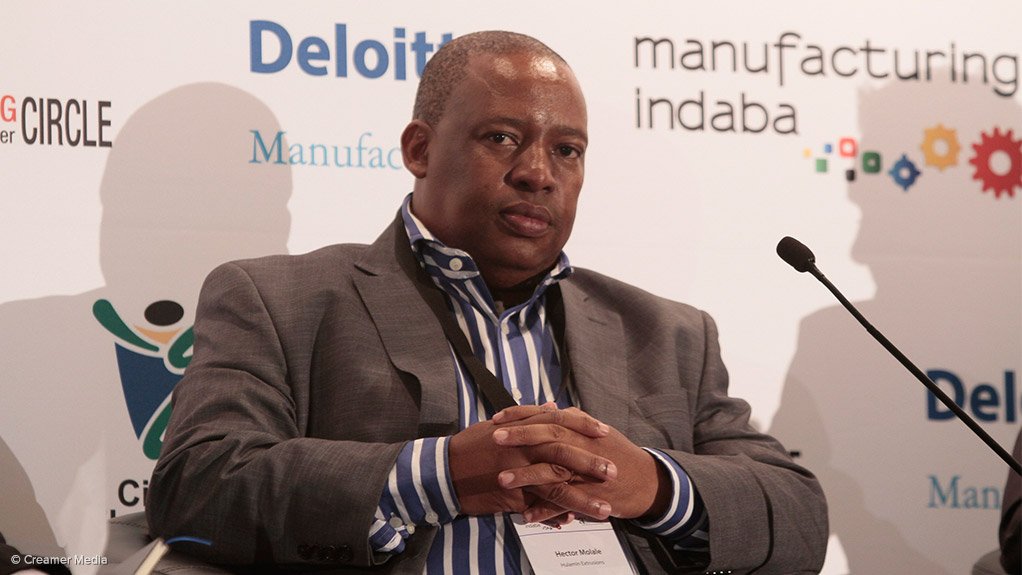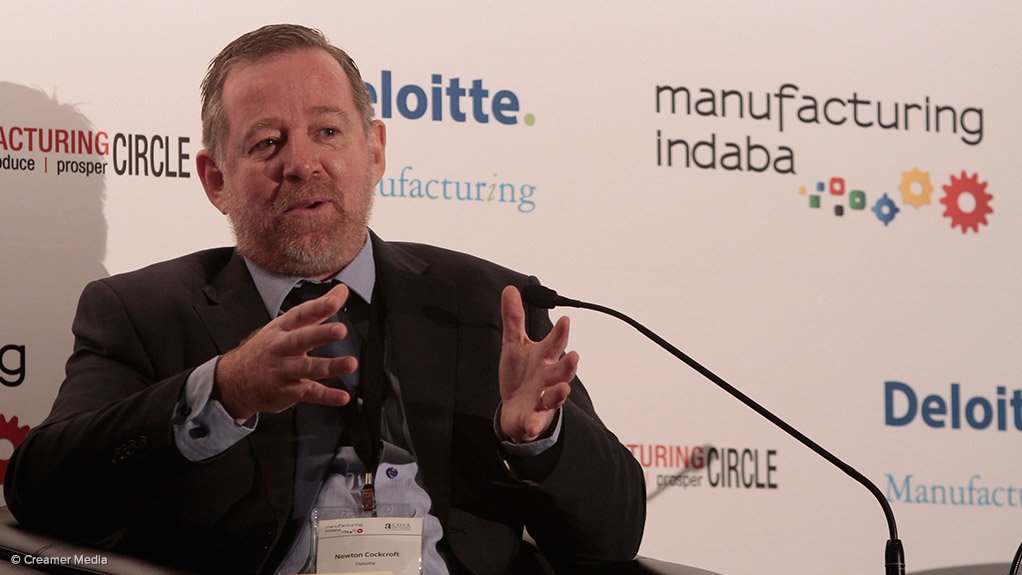Manufacturing incentives well considered, but greater tariff protection crucial




Tumelo Chipfupa
Photo by Duane Daws
Hector Molale
Photo by Duane Daws
Newton Cockcroft
Photo by Duane Daws
Popular consensus emerging from panelists at the Manufacturing Indaba, in Ekurhuleni, on Tuesday, is that, while industry is largely supportive of government’s various manufacturing incentive schemes, these require further bolstering through the implementation of import tariffs to protect the valuable multiplier effect of the industry’s downstream sectors.
Elaborating on the regulatory environment, aluminium producer Hulamin Extrusions MD Hector Molale considered “the greatest constraint to the restoration of the manufacturing sector” to be South Africa’s “porous borders”, which were characterised by the absence of import tariffs and had exacerbated the country’s shrinking manufacturing base.
“We are the only country in the Brazil, Russia, India, China and South Africa grouping that doesn’t have tariff protections for manufactured goods.
“Brazil, for example, has import tariffs [for this sector] of 12%, while India is reviewing its tariffs, which are currently at 5% and China’s import tariffs for manufactured products are 6%. We are receiving manufactured products from countries which themselves have high tariff protections,” he noted.
As a result of the relentless influx of these products, Molale added, that the downstream manufacturing industries – which contributed heavily towards job creation and enterprise development – were being “throttled”.
DEVELOPMENTAL FUNCTION
Adding to the panel discussion, Cova Advisory director Tumelo Chipfupa emphasised the importance of the manufacturing sector to the growth of a developing State such as South Africa, saying that a common thread connecting countries that had been able to “beat” their developmental challenges was their ability to craft a sustainable manufacturing base through supportive government-implemented industrial policy.
“For example, in 1960, Singapore had a per capita income that was one-third of that of South Africa. Today, its per capita income is six times larger than that of South Africa. Their manufacturing sector grew at an amazing pace, while ours grew far more slowly and, as a result, they have left us far behind,” he remarked.
Chipfupa added, however, that recent years had seen a notable increase in the volume and extent of resources that government had committed to the support of local manufacturing.
These included incentives such as the Manufacturing Competitiveness Enhancement Programme, tax allowances, the Incubation Support Programme and the establishment of special economic zones.
“There has been a tremendous amount of funding allocated by government, [but] I realise that the results are difficult to see. We need to learn from industries in which we have seen results from such policy and regulatory supports, such as the automotive industry,” Chipfupa said.
LESSONS LEARNT
According to Chipfupa, automotive industry incentives had seen greater success than that of manufacturing incentive schemes, as the former provided confidence to potential investors, were transparent and had been simply structured.
“In manufacturing, there are all sorts of additional requirements [to qualify for incentives], such as realising a certain revenue threshold, which companies don’t necessarily have control over.
“We need to learn from the [simplicity of the incentive schemes] for the automotive sector and do it in a manner that allows corporate managers and manufacturers to plan ahead,” he noted, adding that to see traction in the industry, business must ensure that chief operations officers and company directors were active participants in government programmes, rather than simply passive applicants.
Chipfupa further emphasised the need for increased coherence between government incentives and funding provided by development organisations, such as the Industrial Development Corporation.
“If these are aligned, they will have far greater impact,” he asserted.
INCENTIVE INVESTIGATION
Fellow panellist Deloitte director Newton Cockcroft further encouraged manufacturing companies to investigate the incentives available to them, saying many industry players were unaware of certain benefits for which they qualified under the numerous manufacturing support programmes.
“Government is not simply comprised of the Department of Trade and Industry; most industry stakeholders are unaware that incentives – such as the waiving of building grant costs – start with local government at municipal level,” he commented.
He added that, while State incentive schemes tended to attract some criticism owing to the associated red tape, they were largely “well handled and well managed”.
“There does, however, need to be greater consistency between incentives and the regulatory environment. This prevents a situation where the [incentives granted by the] DTI are taxed by National Treasury, which is what we saw last year,” Cockcroft noted.
Comments
Press Office
Announcements
What's On
Subscribe to improve your user experience...
Option 1 (equivalent of R125 a month):
Receive a weekly copy of Creamer Media's Engineering News & Mining Weekly magazine
(print copy for those in South Africa and e-magazine for those outside of South Africa)
Receive daily email newsletters
Access to full search results
Access archive of magazine back copies
Access to Projects in Progress
Access to ONE Research Report of your choice in PDF format
Option 2 (equivalent of R375 a month):
All benefits from Option 1
PLUS
Access to Creamer Media's Research Channel Africa for ALL Research Reports, in PDF format, on various industrial and mining sectors
including Electricity; Water; Energy Transition; Hydrogen; Roads, Rail and Ports; Coal; Gold; Platinum; Battery Metals; etc.
Already a subscriber?
Forgotten your password?
Receive weekly copy of Creamer Media's Engineering News & Mining Weekly magazine (print copy for those in South Africa and e-magazine for those outside of South Africa)
➕
Recieve daily email newsletters
➕
Access to full search results
➕
Access archive of magazine back copies
➕
Access to Projects in Progress
➕
Access to ONE Research Report of your choice in PDF format
RESEARCH CHANNEL AFRICA
R4500 (equivalent of R375 a month)
SUBSCRIBEAll benefits from Option 1
➕
Access to Creamer Media's Research Channel Africa for ALL Research Reports on various industrial and mining sectors, in PDF format, including on:
Electricity
➕
Water
➕
Energy Transition
➕
Hydrogen
➕
Roads, Rail and Ports
➕
Coal
➕
Gold
➕
Platinum
➕
Battery Metals
➕
etc.
Receive all benefits from Option 1 or Option 2 delivered to numerous people at your company
➕
Multiple User names and Passwords for simultaneous log-ins
➕
Intranet integration access to all in your organisation





















